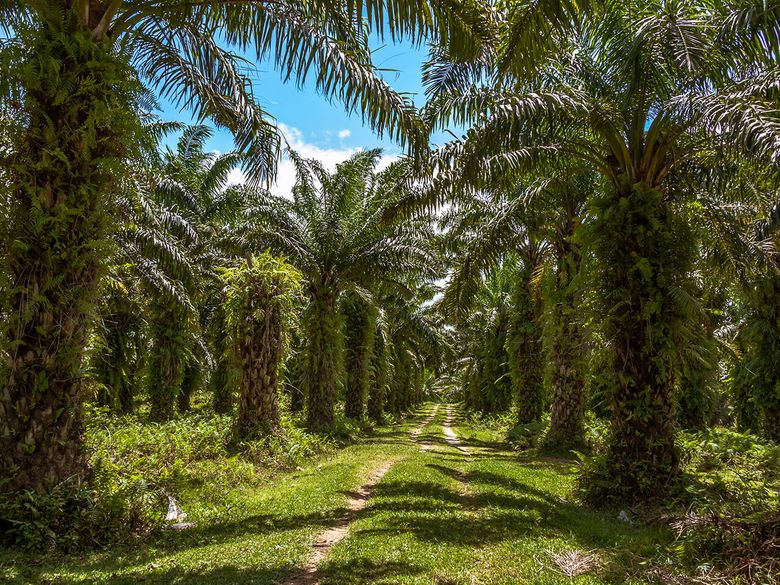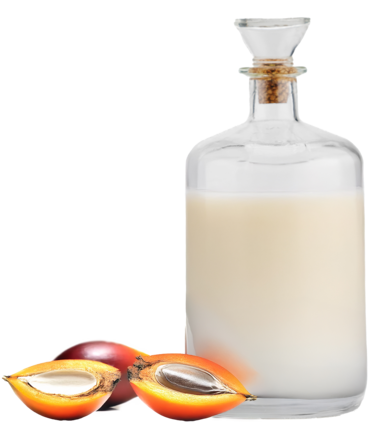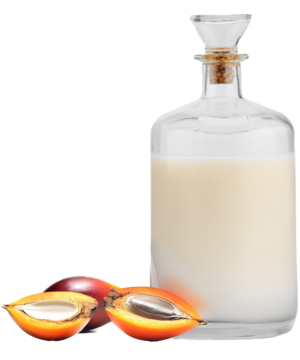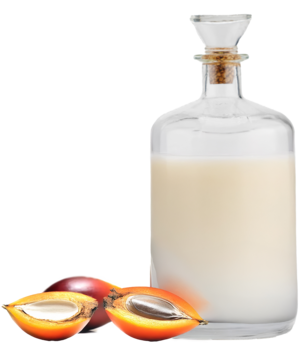Our Palm kernel Oil qualities
We carry Palm kernel Oil in the following qualities for you
Usage
|
Cosmetics |
Food |
Pharmaceutics |
|
|---|---|---|---|
| Palm kernel oil refined SG CU-RSPO SCC-818895 | |||
| Organic palmkernel oil refined IP CU-RSPO SCC-818895 |

Oil palm & oil palm fruit
Palm kernel oil is obtained by pressing and subsequent extraction of the fruit kernels of the oil palm (Elaeis guineensis L.) and then sent to refining.
The oil palm reaches a height of up to 20 m and requires 24-27°C for optimal growth and bears about 50 fruits for the first time after 4 years of growth.
Would you like to be informed about the general market situation of Palm kernel Oil and our other products?
subscribe to market reportCultivation & yield
Oil palms are three times as productive as rapeseed and take up about 1/6 of the area of soya for the same yield. The main areas of cultivation today are Western Africa, Indonesia, Malaysia, Philippines, Brazil and Colombia. Harvesting begins when the fruit begins to fall out of the fruit bunches. The fruit bunches are then cut off with knives. The bunches contain up to 2000 individual fruits, with a hard core surrounded by soft fruit flesh. Palm kernel oil is extracted from the kernel, palm oil from the previously pitted fruit flesh.
In contrast to the fruit flesh, the seeds (kernels) are extremely hard (and thus storable), so that the oil does not have to be extracted at the place of harvest. The oil content is 46-53% and the oil is obtained after drying, crushing and conditioning by pressing or by flaking and extraction. After refining, the raw palm kernel oil (or fat, depending on the temperature), which is solid at room temperature, yellowish-brown in color, has a characteristic smell and taste and is a solid, white to yellowish colored oil with a typically neutral, pleasant taste.

Background / history
Its origin is believed to be in the tropics of East America and West Africa. It is proven that as early as the 15th century, the inhabitants of West and Central Africa extracted the oil from the fruits. Oil palms were first reported in Europe in 1443 by the Portuguese sailor Gil Eannes. It was not until 1850 that the oil was imported into Europe in order to compensate for the growing population's need for fat. With the invention of margarine around 1869 and the further increasing use of vegetable fats, demand rose again. This resulted in the increased cultivation of the plant, so that today the crops are spread over the tropics all over the world.
900
kg
IBC
180
kg
Drum
25
kg
Box
General durability: box 12 months, drum 18 months, IBC 6 months
Nutritional values & composition
| Nutritional value | (per 100g) |
| Energy | 3,700 kJ / 900 kcal |
| Fat | 100 g |
| Saturated fatty acids | 81 g |
| Monounsaturated fatty acids | 16 g |
| Polyunsaturated fatty acids | 3 g |
Fatty acids ratio
Composition
| C12:0 Lauric acid | 44 – 50 % |
| C14:0 Myristic acid | 14 – 18 % |
| C18:1 Oleic acid | 14 – 19 % |
You want to buy Palm kernel Oil?
Request now free of charge and without obligation from Gustav Heess. We deliver Palm kernel Oil ...
- worldwide
- fast
- reliable
We offer Palm kernel Oil in the following packaging units:
-
900
kg
IBC -
180
kg
Drum -
25
kg
Box

